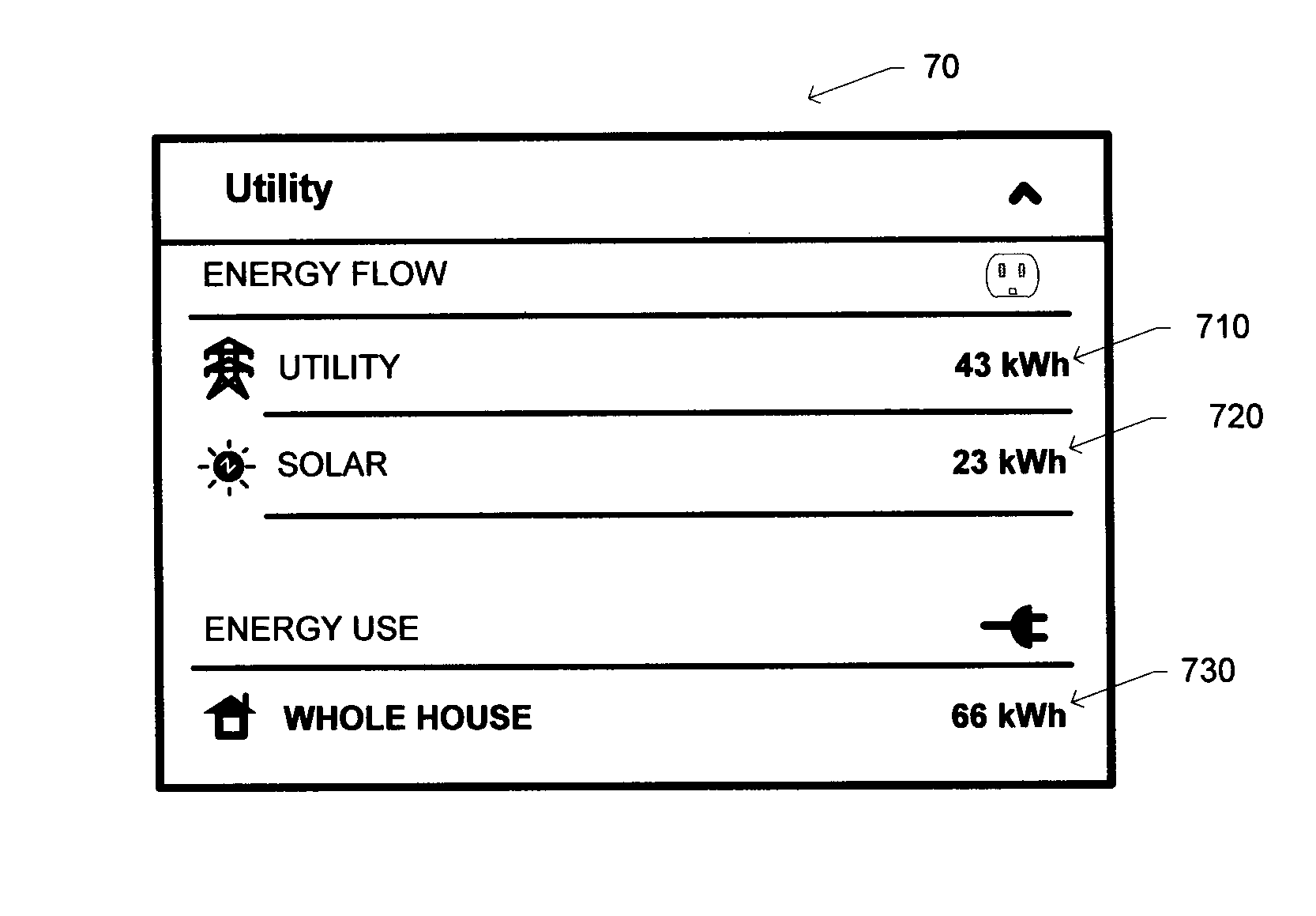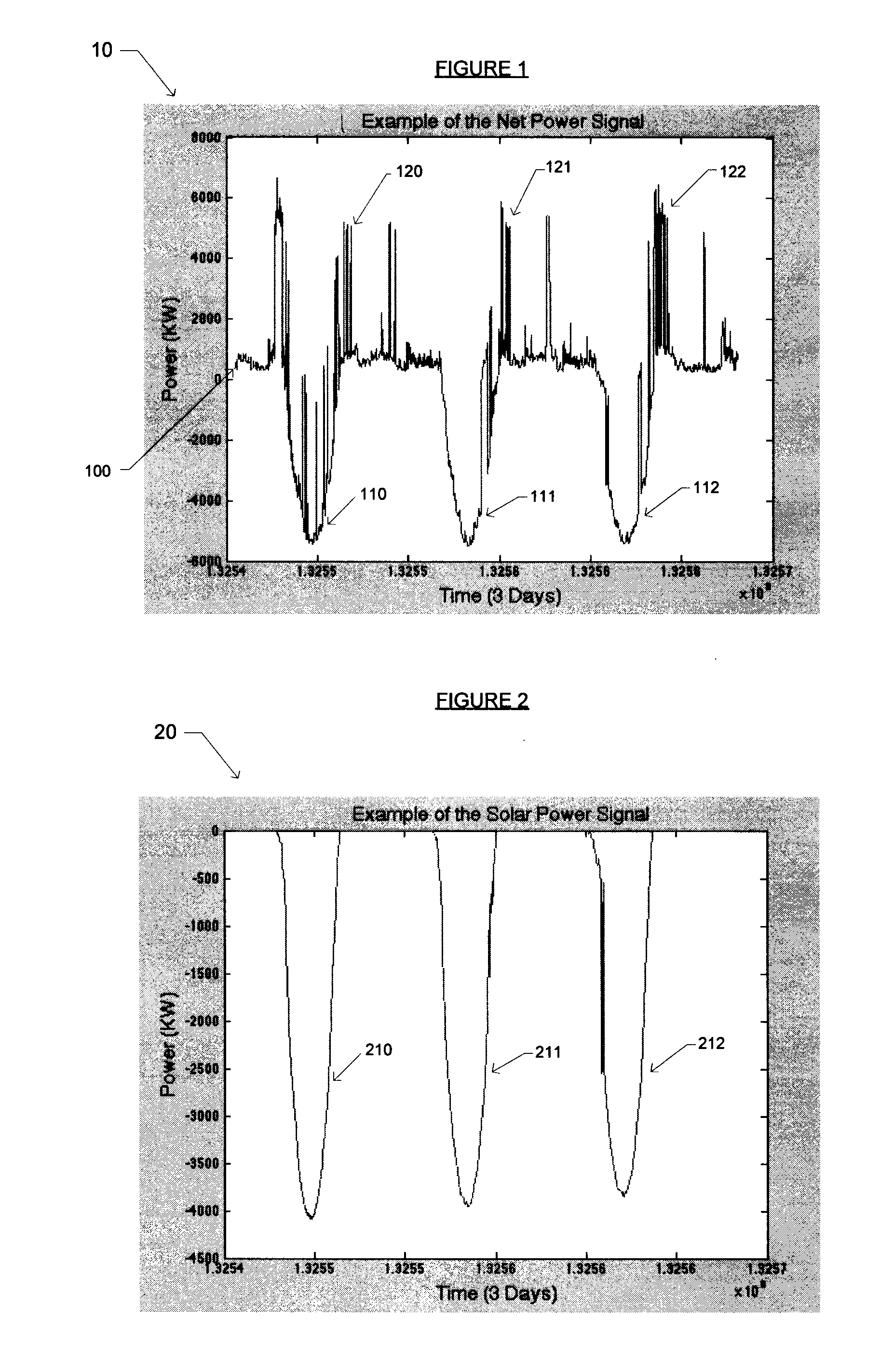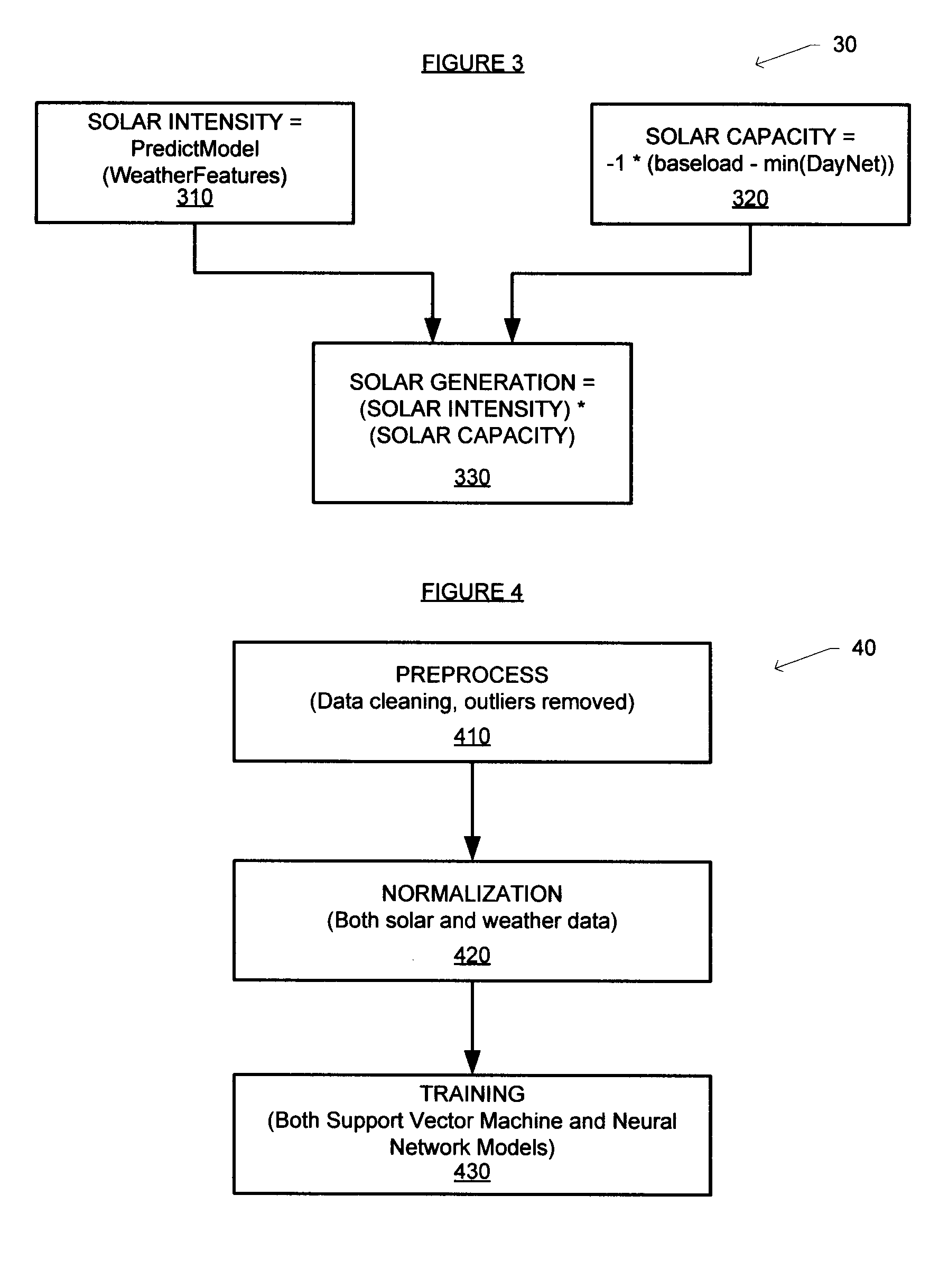Solar Energy Disaggregation Techniques for Whole-House Energy Consumption Data
- Summary
- Abstract
- Description
- Claims
- Application Information
AI Technical Summary
Benefits of technology
Problems solved by technology
Method used
Image
Examples
Embodiment Construction
[0020]The matters exemplified in this description are provided to assist in a comprehensive understanding of various exemplary embodiments disclosed with reference to the accompanying figures. Accordingly, those of ordinary skill in the art will recognize that various changes and modifications of the exemplary embodiments described herein can be made without departing from the spirit and scope of the claimed invention. Descriptions of well-known functions and constructions are omitted for clarity and conciseness. Moreover, as used herein, the singular may be interpreted in the plural, and alternately, any term in the plural may be interpreted to be in the singular.
[0021]In accordance with some embodiments of the present invention, solar output may be predicted for unseen homes (and therefore, homes where solar contribution is not directly measured), by using training data. Training data may provide a predictive model regardless of the location from which the training data was obtain...
PUM
 Login to View More
Login to View More Abstract
Description
Claims
Application Information
 Login to View More
Login to View More - R&D
- Intellectual Property
- Life Sciences
- Materials
- Tech Scout
- Unparalleled Data Quality
- Higher Quality Content
- 60% Fewer Hallucinations
Browse by: Latest US Patents, China's latest patents, Technical Efficacy Thesaurus, Application Domain, Technology Topic, Popular Technical Reports.
© 2025 PatSnap. All rights reserved.Legal|Privacy policy|Modern Slavery Act Transparency Statement|Sitemap|About US| Contact US: help@patsnap.com



